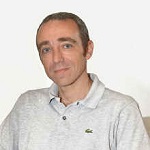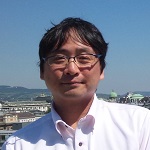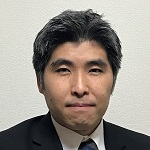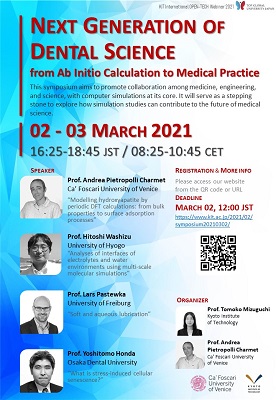3月2日開催オンラインシンポジウム「Next generation of dental science – from ab initio calculation to medical practice」のお知らせ
KIT International OPEN-TECH Webinar “Next generation of dental science – from ab initio calculation to medicalpractice” is a two-days symposium organized by Kyoto Institute of Technology and Venice Ca’ Foscari University. This symposium aims to promote collaboration among medicine, dentistry, science, and engineering, with computer simulations at its core. In order for us to live a long and healthy life, the development of biomaterials is one of the most important factors. It will become more and more necessary since the elderly population is increasing worldwide. Interdisciplinary studies are needed for the development of advanced biomaterials that have minimal impact on the human body and can perform the necessary functions. We believe that expanding the field of collaboration is an important way to lead to the creation of innovative materials. This symposium will serve as a stepping stone to explore how simulation studies can contribute to the future of medical science.
本学とベニス大学カ・フォスカリ校は、2021年3月2日(火)、3月3日(水)の2日に渡り、三ヶ国間オンラインシンポジウム「Next generation of dental science – from ab initio calculation to medical practice」を共催します。本シンポジウムは、コンピュータシミュレーションを中心とした、医学、歯学、理学、工学の連携を促進することを目的としています。バイオマテリアルの開発は、私たちが健康に長生きするための、最も重要な要素の一つであり、世界的な高齢者人口の増加を受け、今後ますますその必要性が高まってくると考えられます。人体への影響が少なく、必要な機能を果たす先端的バイオマテリアルの開発には、他分野にまたがる研究が必要であり、共同研究の場を広げることが革新的な材料の創出につながる重要な道となります。本シンポジウムは、シミュレーション研究が医学の未来にどのように貢献できるかを探る、足がかりとなると考えています。
This lecture has been closed./この講演は終了しました。
- Date: Tue. Mar. 2nd & Wed. Mar. 3rd, 2021
- Time: 16:25 – 18:45 (Japan)
08:25 – 10:45 (Italy/Germany) - Language: English (No interpretation services)
- Venue: Zoom Meeting
- 開催日:2021年3月2日(火)、3月3日(水)
- 講演時間:16:25~18:45
- 使用言語:英語(通訳なし)
- 会場:Zoomミーティング
Abstract of the lecture/講演の概要

Prof. Andrea Pietropolli
Charmet
“Modelling hydroxyapatite by periodic DFT calculations: from bulk properties to surface adsorption processes”
This talk will give a survey of the atomic-scale modelling of hydroxyapatite (HA) obtained by means of periodic calculations carried out using density functional theory (DFT) and adopting linear combination of atom-centered Gaussian-type orbitals (GTO) as basis sets. In the first part, the effects on the calculated bulk structural parameters related to the choice of functionals, the inclusion of the corrections for dispersive forces, and the use of different basis sets will be presented. The differences between the data computed with the adoption of all-electron basis sets for the Ca ions and the ones yielded by calculations carried out with an effective core pseudopotential basis sets will be considered. The results obtained for the structural parameters and some relevant mechanical properties will be presented and compared with respect to the experimental data. In the second part of the talk, the main steps for the modelling of the adsorption process on different relevant HA surfaces will be introduced, and a brief survey of some recent results will be presented.

Prof. Hitoshi Washizu
“Analyses of interfaces of electrolytes and water environments using multi-scale molecular simulations”
According to Prof. M. Muthukumar in U. Mass., The cell may be considered to be a crowded ‘Coulomb soup’ where the charged macromolecules (called polyelectrolytes) physically assemble to form various large structures in aqueous salt environment. From the viewpoint of computer simulations, this means multi-scale approach is essential to treat these kind of systems. The systems are governed by long range Coulomb potential, solvent structuring and flow, and the shape of the polymer, they realize the most complex system in nature. In this talk we show classical coarse-grained simulation of polyelectrolyte solutions, which focused on the long range Coulomb interaction. We focus on the phenomena related to counterion condensation, which occurs in many kinds of biopolymers. The structure of condensed ions due to the statistical mechanical effect and the dynamics are discussed. Then we extend to incorporate the effect of solvent flow, solvation in the coarse-grained simulation. At last we report about the all-atom molecular dynamics approach which are focused on the structure and dynamics of water molecules within the ionic materials.

Prof. Lars Pastewka
“Soft and aqueous lubrication”
Aqueous lubrication is of relevance for biocompatible lubricant systems and for the lubrication of soft solids. Computer simulations that generate a molecular understanding of lubricated soft systems are difficult because deformation processes in soft materials span many decades in time scale. This talk describes molecular simulations on three examples of soft and aqueous lubricant systems. In hydrogel systems, friction is determined by the relaxation time of a single chain. During sliding, surface chains are continuosly stretched because of the external driving force. The friction coefficient increases with velocity as soon as the frequency of chain excitation exceeds the typical relaxation time of a surface dangling chain. In accordance with experiments, this gives rise to a velocity-independent friction coefficient at low velocity crossing over to a power-law behavior at high velocity. The hydrogel system shows that the surface is important for determining the friction coefficient, since our calculations reveal that the relaxation of the surface dangling chains and not the bulk chains is important. Surfaces can be functionalized with the addition of a surfactant to the aqueous solution. We study the effect of the anionic SDS and the cationic CTAB on friction forces. Our calculations show a dependence of friction force on surfactant concentration and surface morphology. Adsorption of SDS and CTAB can be tuned electrochemically and this has been experimentally shown to affect friction. We probe this electrochemical control of friction using a simplified system, a Na-Cl electrolyte between two gold electrodes. Our calculations show that the applied voltage has a pronounced effect on surface slip and this affects the friction coefficient in narrow channels. These three systems are examples of advanced calculations of soft and aqueous molecular systems that show nontrivial frictional behavior. In combination with electrochemistry, they may prove useful for realizing frictional systems that can be electrically tunable.

Prof. Yoshitomo Honda
“What is stress-induced cellular senescence?”
Aging is an inevitable process for all organisms, including humans. People often use the words “aging” and “senescence” interchangeably, but researchers who study aging and related phenomena use “aging” mainly as chronological changes and “senescence” as deterioration of function. Research on aging is attracting increasing interest partly because various diseases, such as certain cancers, cardiovascular diseases, dental diseases, and neurological disorders, emerge in association with and as a consequence of aging. Meanwhile, rapid advancements are being made in senescence researches especially on cellular senescence because of the development of senolytic drugs that specifically induce the death for senescent cells. So far, we have a strong interest in stress-induced cellular senescence and have been engaged in related dental and medical researches. In this symposium, I would like to answer the following questions: “What is the cellular senescence?” “How did we start conducting cellular senescence research?” “What are the hot topics in this field?”. Aging and senescence research have a long history in various medical fields. Consequently, many people may think, “What is new?”. I hope to introduce you to an old field of study with new and exciting trends.

